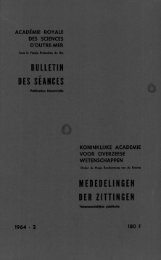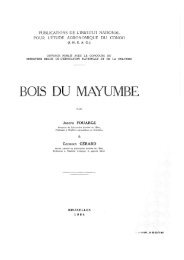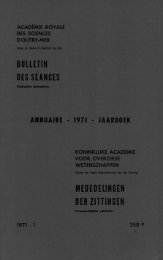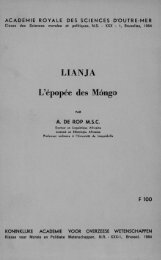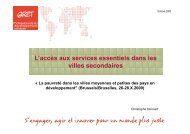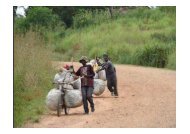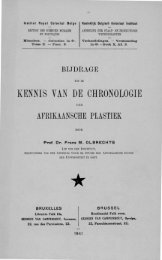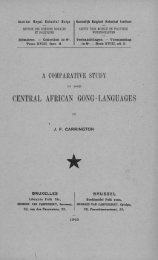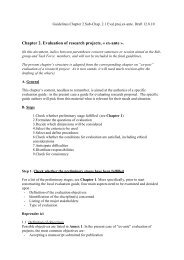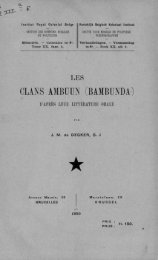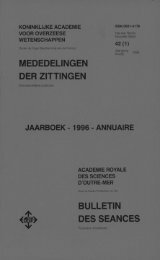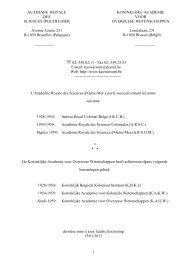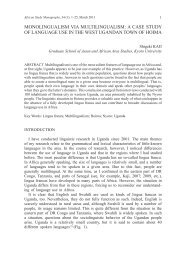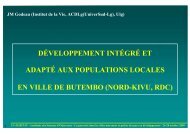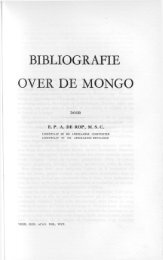(1973) n°3 - Royal Academy for Overseas Sciences
(1973) n°3 - Royal Academy for Overseas Sciences
(1973) n°3 - Royal Academy for Overseas Sciences
Create successful ePaper yourself
Turn your PDF publications into a flip-book with our unique Google optimized e-Paper software.
P.C.C. Garnham. — History of the Discovery<br />
of the Tissue Stages of the Primate Malaria Parasites<br />
SUMMARY<br />
The search <strong>for</strong> the tissue cycle of the malaria parasites has<br />
been bedevilled by a number of false clues. The earlier work<br />
on avian malaria and incrimination of the mesoderm as the<br />
site, proved to be a bad model <strong>for</strong> primate malaria. Although<br />
the first observations on the tissue cycle had been made as<br />
early as 1908 on malaria in pigeons in Brazil, another 40 years<br />
had to elapse, be<strong>for</strong>e it was realised that the parenchyma cells<br />
of the liver represented the sole site of exoerythrocytic development<br />
in human malaria. Since 1948 the cycle in all human<br />
parasites and in many animal species has been discovered, and<br />
each species exhibits characteristic features. The origin of relapses<br />
and the explanation of the delayed prepatent period in<br />
certain strains of vivax malaria still remain an enigma.<br />
* * ■«•<br />
RESUME<br />
La découverte du cycle complet des Plasmodium humains a<br />
été retardée de plus de quarante années, du fait d’une première<br />
orientation des recherches basée sur le paludisme aviaire.<br />
Bien que l’on ait mis en évidence les différents cycles tissu-<br />
laires, en dehors des globules rouges des divers parasites humains<br />
et de nombreuses espèces animales, l’origine des rechutes<br />
et la raison de l’allongement de la période d’incubation de<br />
certaines souches de Plasmodium vivax reste une énigme.



